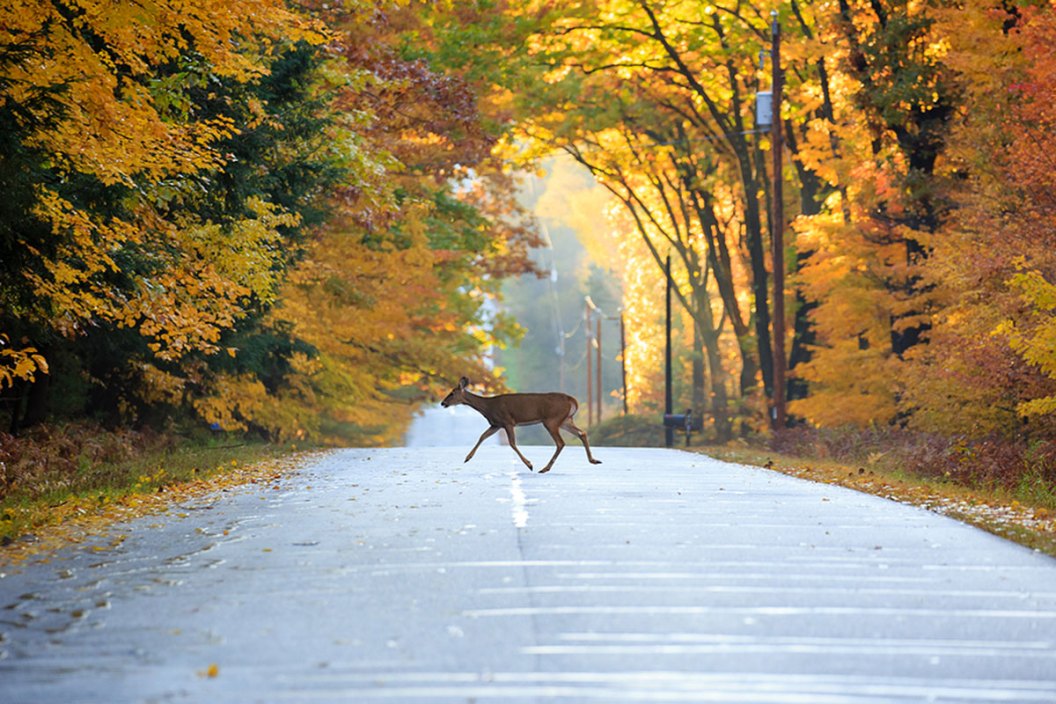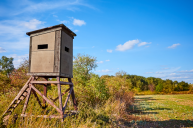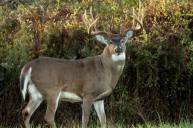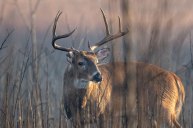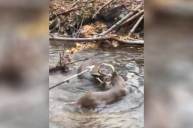Deer vehicles collisions are a part of life in America. Here's what you need to know.
It's not something to joke about: deer vehicle collisions are a serious threat to the safety of not only our wild whitetail and mule deer herds, but to our human driving population. Real injury and even death can result in these sort of incidents, and anyone who's hit a deer (or worse, an elk or moose) knows the expensive damage that can be done.
So what do we know about deer vehicle collisions and their occurrences? Where do they usually happen? What time of day, and what time of year are they most common? Is there any way to avoid them, or at least mitigate their damage?
All of these are tough questions to answer, but we'll try to address them in an effort to help ease your stress when behind the wheel, and maybe even decrease the total number of deer crashes by spreading some important knowledge.
When Do Deer Vehicle Collisions Happen?
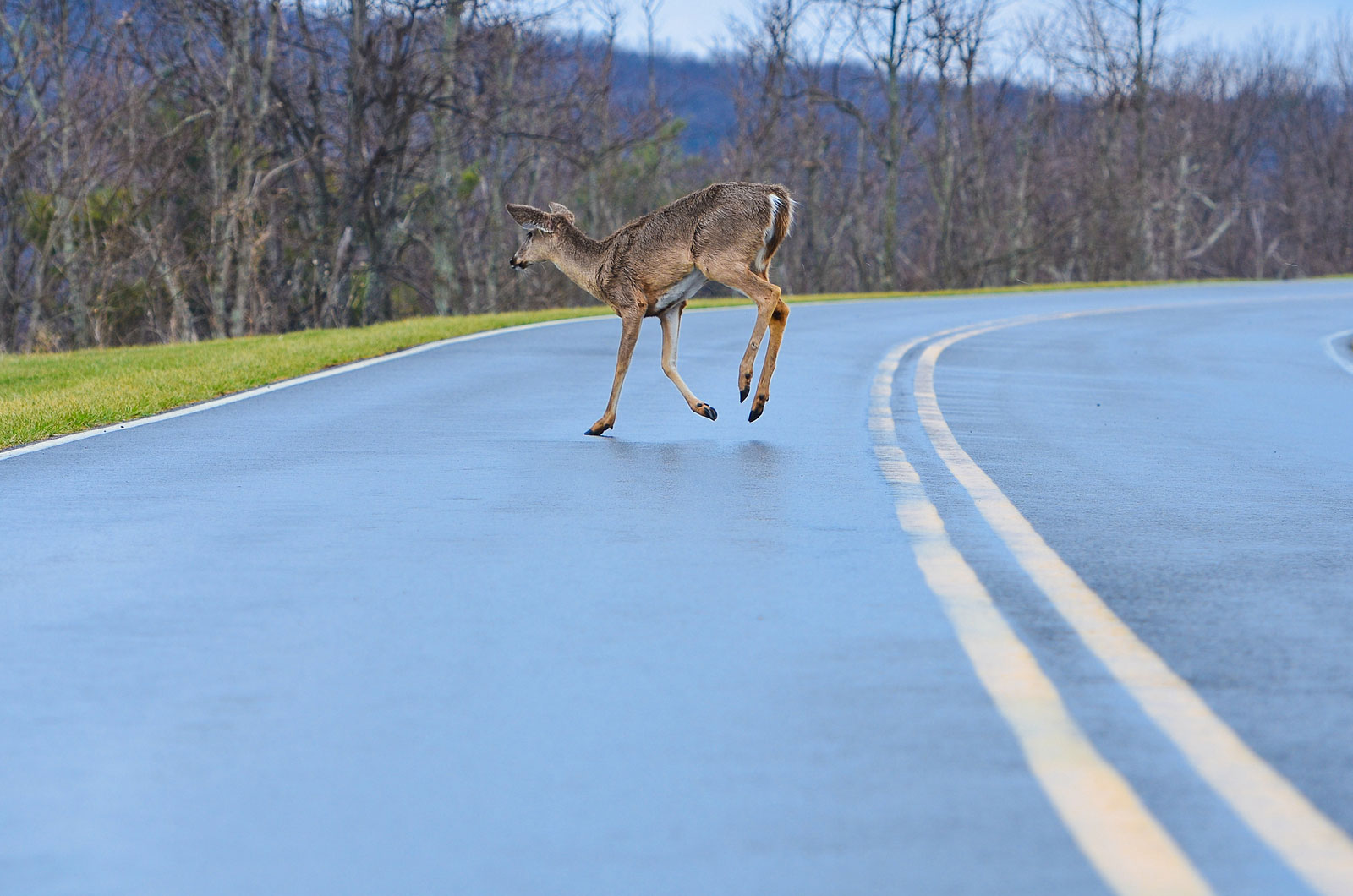
Deer vehicle collisions happen the most under low light conditions, during dawn and dusk when they're most active. Overall, hitting deer costs the average North American resident over $4,000 per accident, and that total keeps going up.
Where do we get these sorts of numbers? From the providers of collision insurance, of course.
The Insurance Institute for Highway Safety, and in particular State Farm Insurance says, "New data shows U.S. drivers on the average have a 1 in 116 chance of a collision with an animal."
When it comes to large animals like the whitetail deer, vehicle accidents can be costly in more ways than one.
If you think about it, when we drive our vehicles roughly twice a day, every day, for the better part of each week, the odds of seeing an animal cross the road in front of us increases exponentially every time we get behind the wheel.
By most accounts, the experts say October, November, and December become prime time to see deer movement during the peak of the rut.
And in all honesty, all of the deer I've hit in my lifetime were during the month of September!
Needless to say, there's an increased risk in the fall months, but you should remain vigilant year round and always follow some of the best practices we'll advise shortly. Even when it is not the fall of the year, it is a must to be on the alert during the dawn and dusk hours as deer are crepuscular and move the most during those times.
States With the Most Risk
While West Virginia seems to always top the list of states where drivers have the most animal vehicle collisions, Montana, Pennsylvania, and South Dakota are also near the top of the index.
Rounding out the rest of the High Risk list is Iowa, Wyoming, Wisconsin, South Dakota, Minnesota, Michigan, and Mississippi. I feel like I see dead deer on the side of the road year round here in New York, including quite a few fawns in the spring. My state falls into the Medium Risk list, with places like Florida, Connecticut, and most of the Southwest in the Low Risk category.
The amount of motor vehicle damage in the United States due to deer-car collisions seems to go up ever year, and the price of repairs increases right along with it.
Since insurance companies seem to understand this, especially in the afore mentioned states, many will tell clients to simply say, "I hit a deer" when making a claim. Even law enforcement officials will tell drivers that if a deer hit occurs, you aren't injured, and the vehicle is drivable, there is really no reason to contact the police. We're hoping that doesn't dissuade you if you feel the need, but just merely pointing it out.
It should be said that if you continue to make this claim over and over, your insurance company is going to get suspicious. We aren't trying to give any legal advice, for crying out loud. Make good judgement, will you?
What Should You Do If a Deer Crosses in Front of You?
This question is another in a long line of "ask 10 different people and you will get 10 different answers." We have a short list of recommendations for tools that can help a driver avoid this situation altogether, but even these items can only go so far. Eventually, odds are a deer or some other animal will find its way in front of you at some point in your driving career.
Perhaps the best reminder in all of this is to be situationally aware whenever you're behind the wheel. It behooves every driver to stay alert at all times. Sure, saying to "Pay attention!" while driving is obvious, but eliminating common distractions, putting away cell phones, and smartly scanning the pathway in front of you count for a lot. Don't ever let your guard down, and anticipate things that may happen.
It's also wise to remember that deer don't only come out of the cornfield, the woods, or an apple orchard. I've hit deer that came out between two houses in a residential neighborhood before. Take "deer crossing" or "wildlife crossing" signs seriously, and use your high beams when it's safe and appropriate to do so.
In the event that you have seen the animal and it has stopped, some believe that flicking the high beams on and off a few times (should you have the time) is one effective method to get them moving again. I've seen it work personally, but there's never been any true studies on how effective this tactic may really be. Plus, no two collisions, or near collisions, are ever going to be the same.
Don't Swerve to Miss Hitting a Deer
Most experts agree that the most important thing is that you do not swerve to avoid hitting a deer. Swerving can have two horrible possibilities: crossing the road into oncoming traffic, or losing control and going off of the road in the other direction.
Your motor vehicle is made to minimize damage and injury to you and your passengers in the event of most accidents, and you should survive a collision with a deer. But a head on crash into another car or a tree is another story.
You should also note that the "herd" part of deer herd is as literal as it gets. Some of the best advice that I like to give people is this: If you see one deer, there are probably 10 more that you just can't see.
It's not always true, but this kind of thinking has gotten me out of more than one jam. I see it often: one crosses in front of me, then another and another, leading me to never believe I've seen the last one of the bunch.
Another useful method that I have seen work comes from States Farm: "Brake as necessary. If you can avoid hitting the animal, reduce your speed, honk your horn, and tap your brakes to warn other drivers. If there are no drivers behind you, brake hard."
In other words, "Hit the horn, hit the brakes, and hit the deer."
Tools to Help Avoid Deer
State Farm and others have gone on record saying deer whistles, mounted to the front bumper and meant to scare them away with a high pitched noise, do not work.
I have generally subscribed to this kind of thinking, but it still has to be said that a bumper-mounted deer whistle certainly won't attract a deer.
It's your own call on this one, but most studies suggest that they really don't work.
It should go without saying that motorists should always use their seat belts in obvious deer crossing areas, especially during the mating season
But when a deer appears on your side of the road, there may be a new tool and train of thought when it comes to getting them out of your way: the reverse-facing light bar.
In an exceptionally detailed study, ESA Journals has published the results of a USDA report saying, "We evaluated a vehicle-based collision mitigation method designed to decrease the likelihood of deer-vehicle collisions during low-light conditions, when most collisions occur. Specifically, we investigated whether the use of a rear-facing light, providing more complete frontal vehicle illumination than standard headlights alone."
QDMA has broken it down even better. Their response to the study said this: "Did it work? The researchers say yes and reported the likelihood of hitting a deer decreased from 35% (truck with headlights only) to 10% (truck with headlights and rear-facing light bar). The reduction was driven by fewer instances of deer "freezing" as the vehicle approached. The more illuminated truck caused some deer to move farther away from the road and others to cross the road."
The point is to make the larger portion of the vehicle stand out to animals in the hopes that it will make them realize it's a threat and run away. It seems like a rather obvious question would be, does a rear facing light system cause any vision obstruction for the driver? I'd think not but can't speak from experience.
The difference between 35% and 10% is significant. If you think those numbers are enough to convince you, then this might be the best method to choose that we know of.
One last thing you can do involves a little community service outreach. Encourage your local municipality to clear back the road edges in your area at least 10 feet to keep deer from appearing as if out of nowhere. They'll often come out of the cover and into a clearing to pause and check their surroundings before they move on. If local authorities don't respond well to the idea, do it yourself (if it's legal to do so).
That act might just give you the time to react and avoid hitting one.
What to Do if You Hit a Deer
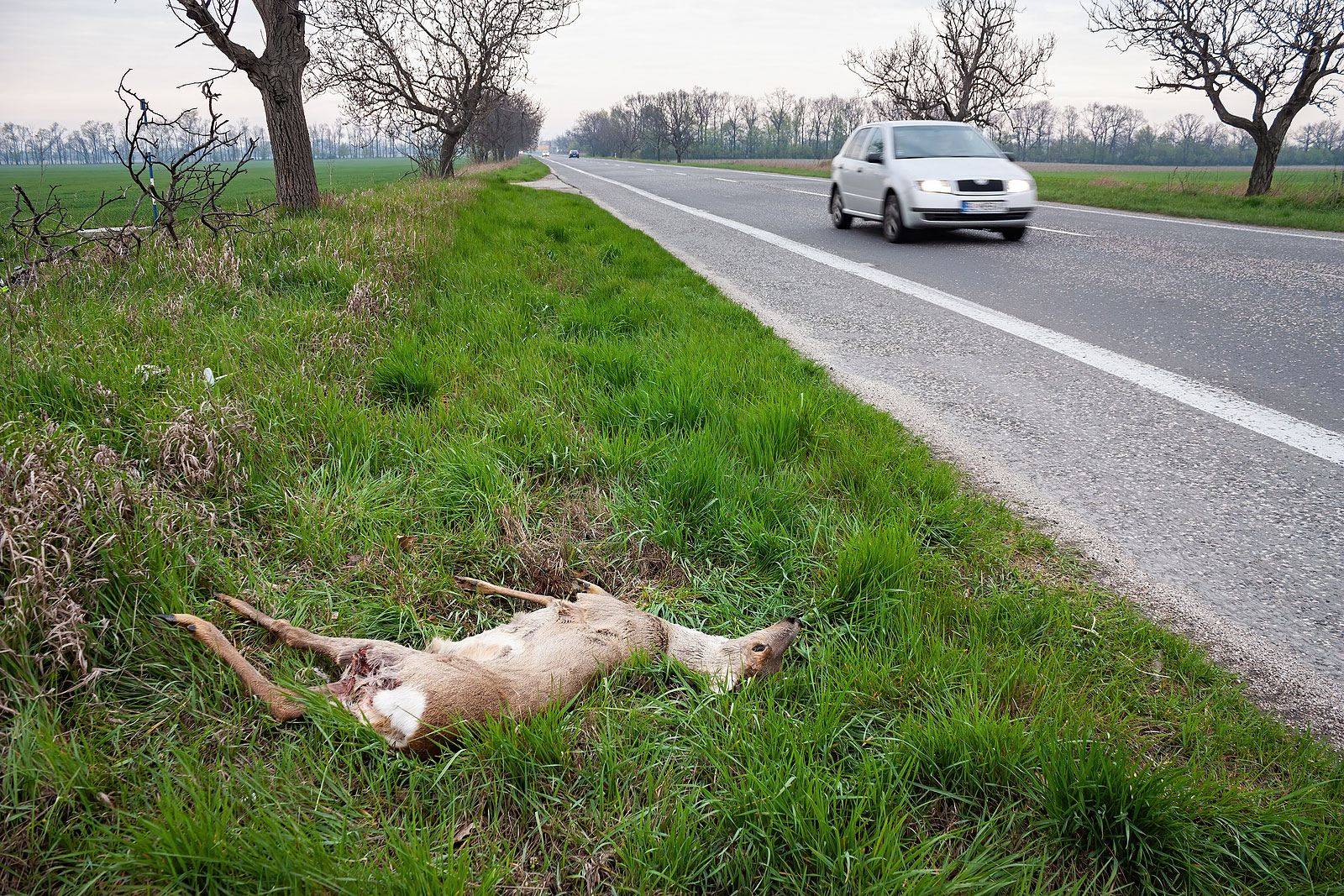
It may be stating the obvious, but State Farm says, "Move your vehicle to a safe place. If possible, pull over to the side of the road, and turn on your hazard lights. If you must leave your vehicle, stay off the road and out of the way of any oncoming vehicles."
While you should never assume your vehicle is safe to drive, most of us know to look for leaking fluid, tire damage, or a hood that won't latch. Depending on the severity of the hit, you should document the accident with some pictures or by writing it down when it is safe to do so.
Hitting a deer can be a nerve shattering experience, even for a veteran driver, but a collision with any kind of animal is scary. The most important thing to do is to keep alert and don't let the wrong kind of distractions take your eyes away from the road.
Looking for a little more or even hot lunch for your hunting blind? Follow my webpage, or on Facebook and Twitter.
NEXT: 6 WAYS TO MAKE A DEER STOP IN THEIR TRACKS
WATCH
